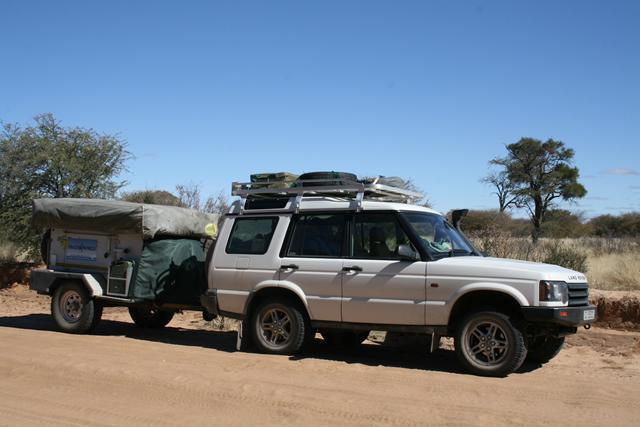If you plan on venturing into remote areas, preparing your vehicle is of the utmost importance. You have to make sure that you and your companions travel safely and that you will be able to survive the ordeal if you do get into trouble.
You will have to be a self-sufficient and preferably experienced camper. If you have never done an overland trip before, we recommend that you consider renting camping equipment and try it out closer to home first. That is the best way to figure out if you and your travel companions really like camping and what you need and what you don’t need. Camping equipment is expensive, and one can easily be lured into buying a lot of unnecessarily paraphernalia that will cost you dearly, not only money wise, but also in terms of space and weight.
Make sure you can use all your equipment. Don’t take off with stuff you’ve never used. When the day of reckoning arrives, you don’t want to find out it doesn’t work for you, or is defective or missing some essential part.
First things first
When preparing your vehicle for a trip, the first and utmost important point is to make sure that the manufacturer’s services are up to date. If your overland vehicle is kept in storage, you will have to make sure that it is used and serviced regularly.
Ensure that the tyres are of good quality, in good condition and preferably not older than six years, even if they still have enough tread. Take at least one, but preferably two, good spare tyres and a puncture repair kit. Invest in a good quality kit (not the plastic ones) and make sure you know how to use it. Take your tyre compressor and pressure gauge along so that you can adjust tyre pressure as needed.
Thoroughly check your vehicle’s mechanicals just before the trip. This is especially important if you haven’t used your vehicle much since the previous service. This is a good time for the proverbial “bumper-to-bumper” check of suspension and transmission components, steering linkages, healthy engine operation, etc. If you don’t have the time, ask your favourite mechanic to do it.
Aftermarket fittings
If you have any aftermarket products or equipment fitted to your vehicle, make sure it is in line with your vehicle’s specifications. Pay particular attention to electrical equipment that could interfere with the vehicle’s safety systems. Also test drive your vehicle to see if you’re happy with any non-electrical and non-mechanical equipment fitted to your vehicle, like roof racks. Make sure everything is fitted securely.
Be prepared to fix it yourself
Always take cable ties to refasten things that rattled loose. Take duct tape and a basic tool kit as well as a few basic spares like a fan belt and filters. Also take spares for parts that are possibly prone to failure on your vehicle model. Take at least one spare of all the fuses on your vehicle, even for the cigarette lighter plug that you use for your GPS, mobile phone, etc.
Always have a fire extinguisher in your vehicle and make sure that it is full and in working condition.
Prepare for specific conditions
Prepare your vehicle for specific conditions that you know you will be facing. If you intend driving through long grass, take along a seed screen to protect your radiator from being blocked. Try to use a net that is long enough to cover the radiator at the bottom as well, as most of the seeds are sucked up from below. Don’t leave it on your vehicle all the time as it could increase your vehicle’s fuel consumption by almost 10%, especially for turbo-diesels that rely on cool intake air.
If you expect having to ford deep water, take along a plastic or tarpaulin radiator cover and consider fitting a snorkel. A snorkel also helps to reduce the amount of dust being sucked into your air filter.
Knowledgeable advice can help ensure you’re on the right path without wasting your money.

